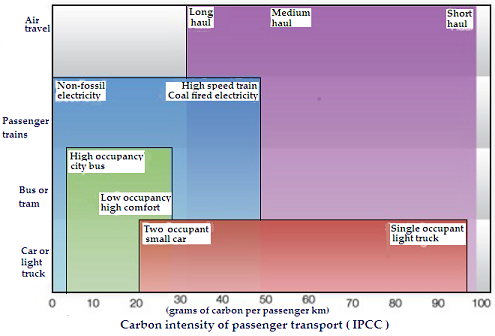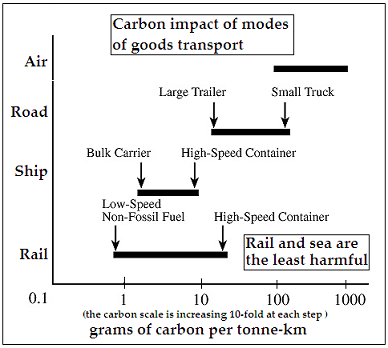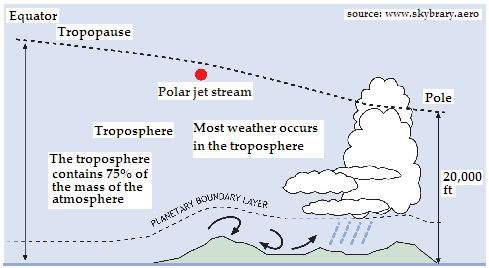The impact of air travel on global warming is found to get worse as the globe warms, says S.Ananthanarayanan.
That air travel leads to emitting more CO2 than any other form of getting about is well known. While travelling by air thus leads to more global warming and the ills that go with it, it is now discovered out that global warming, in turn, leads to increasing carbon cost of air travel, which will then spur global warming and so on.
Kristopher B. Karnauskas, Jeffrey P. Donnelly, Hannah C. Barkley and Jonathan E. Martin, of the Woods Hole Oceanographic Institution, Massachusetts, MIT and the University of Wisconsin at Madison, report in the journal, Nature Climate Change, their study of how atmospheric conditions of the earth affect high altitude aircraft speeds, and hence how much fuel aircraft burn, at different times of the year and in different years. And their study shows that global warming, a phenomenon that is aggravated by the emissions arising from air travel, has an effect of retarding aircraft speeds and hence leading to more emissions.
This would have serious implications, as air travel already has the highest emission of all modes of travel. According to an IPCC report, air travel generates from 30 grams to 110 grams of CO2 per passenger kilometer. This is to say that every 1000 km by air could cause emission of up to 110 kg of CO2, which amounts to burning 30 kg of coal. This is about the same as two occupants in a small car, but in contrast, the carbon cost of doing 1000 km by bus would be just 20 kg of CO2 and by train, it could be as low as 5 kg. Air travel also leads to emission of other greenhouse gases and the effects are rendered more serious by the emission being at high altitudes. Air travel is hence the most environmentally damaging and although it now accounts for some 3.5% of the total greenhouse gas emission, air travel has been increasing and is estimated to double by 2030 years and account for 15% of GHG by 2050.


Differing speeds
The study by the Woods Hole group, however, was of not of the effect of air travel on the environment, but the other way about. It is generally known that high altitude winds that blow from the west to the east help air travel in that direction, but retard flights that are against the wind. This effect is because of the jet stream, a set of currents of air, which can be as fast as 500 kmph, at a height of some 7 to 12 kilometers, generally at higher latitudes and nearer the poles. These currents are caused primarily because of the west-to-east rotation of the earth, and also because of the inclination of the earth’s axis of rotation, because of which the poles are substantially cooler than the equator. There is thus convection of warm air towards the poles and of cool air towards the equator. The effect of rotation of the earth is that the stream towards the poles carries on with the higher west-east speed of the equator and swings to the east at higher latitudes. Air coming from the poles blows to the west and where the two streams make contact, the result is a stream that blows powerfully to the east. This happens at about 9 kms above sea level, which is the height, called the tropopause, at which the cooling of the atmosphere with altitude, due to expansion, changes to warming, by being closer to the sun.
East flying aircraft thus make use of the currents of the jet stream to make better speed. At the same time, on their return flight, the jet stream acts as a retarder and the flight takes longer. The Woods Hole research made use of a vast data base of actual flight times of all aircraft, some 250,000, over 19 years from 1995 to 2013, by four different operators, between a set of airports, of study variations in aircraft speeds and the wind conditions that affected them. To be able to get only the effects of climatic environment, unaffected by other factors, even day to day weather, the study was not of the flight time itself, but the difference in the time taken for the flight one way and the return flight.
The remarkable result of the survey was that the difference in the time taaken, referred to as ?t, which changed quite a lot from season to season and from year to year, was the same for all operators and all routes. ”That the observed fluctuations in flight times are synchronous throughout the sector regardless of route or carrier suggests a common driver, which we hypothesize to be climate variability,” the authors say in the paper.
The study was then extended to matching the high and low values of ?t with actual wind conditions, as known from meteorological records. Here again, it was found that the highs and lows of the ?t corresponded closely with speed changes in data of the wind at the cruising altitude. And then, what was a remarkable observation was that the tropical and high latitude climatic variation corresponded closely with the timing of El-Nino events, in the southern Pacific. El-Nino is the reversal, every few years, of the usual warm state of the sea at the eastern coast of Australia with surface winds blowing from the eastern end of the Pacific Ocean. Usually, water shores up at the Australia end, and deep water and nutrients rise to the surface around the coast of Peru. During El Nino, however, the Peruvian coast warms, which spoils the fishing, but brings plenty of rain.
Dependence on warming
Another alarming observation made is that while there are variations between flight times in the two directions, the time lost in one direction is not the same as the time gained in the return journey. Thus, while there are changes in ?t when there are changes in wind speeds, which may happen because of the oscillatory nature of the forces in balance, or due to warming effects, there are also changes in the total time of flight, and hence the total fuel consumed. It was therefore important to see what effect global warming had on the nature of high altitude winds, the authors say.
How warming may affect the winds was investigated by simulation, using 34 accepted global climate models (GCMs) of how the atmosphere would respond to warming. While trials using the GCMs have generally not yielded clear results of what changes warming would bring about, half the GCMs, do say that there would be a clear change in wind speeds, not much, but leading to an increase of 5.5 hours in flying time, daily, for each route, for each carrier, every year! Even for just the four carriers considered in this study, for three routes and only two flights a day, this increase amounts to 133 additional flying hours and 4.6 million kg of CO2.
Although direct extrapolation of this result to all airline operations would not be justified, estimation, based on increase of one minute in round trip flying time, for all commercial flights, leads to an increase in CO2 emission by 10,000 million kg. This is still negligible compared to the total global emissions, but it does show that global warming feeds back to increase one of its own causes, and calls for more study of the underlying mechanism, the authors say.
------------------------------------------------------------------------------------------
